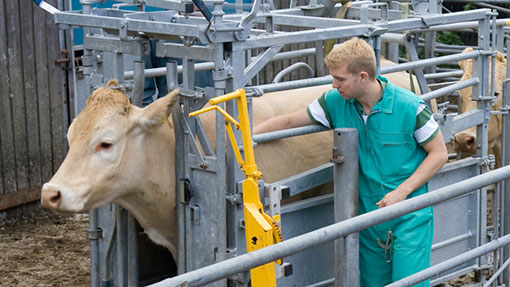Bovine TB slaughter numbers fall by 15%

The latest government statistics show a 15% drop in cattle slaughters due to bovine TB between 2012 and 2013.
The number of cattle compulsorily slaughtered as reactors or direct contacts between January and November 2013 was 30,220, compared to 34,896 during the same period in 2012, according to figures released this week from the Animal Health and Veterinary Laboratories Agency (AHVLA).
The figures for the UK were released after Ireland last week published its latest figures on bovine TB, which showed a year-on-year 15% fall in Irish cattle testing positive for the disease in 2013 .
The Irish government attributed part of the drop in TB cases to its badger cull scheme. However, anti-cull campaigners said the fall in cases in the UK, which does not cull badgers, shows the practise is not necessary.
In the UK, the number of herds not officially TB free due to a bovine incident has also shown a steady fall between March and September 2013, from 4,960 to 4,312.
See more on Bovine TB and the badger cull
However, a DEFRA spokesman stressed it was important not to focus on short-term trends. “Long term there are still unacceptably high levels of TB. We still have the highest levels in Europe,” he said.
“It is positive we’re seeing less cattle being slaughtered but it’s difficult to attribute it to anything in particular. The vaccination is only used in small areas so I don’t think this has had any impact on the national picture.”
DEFRA is urging farmers to continue to use all the tools they have in terms of biosecurity and surveillance to tackle bovine TB. However, the spokesman stressed no other country has successfully eradicated bovine TB without tackling the reservoir of disease in wildlife.
He added it was “still too early to tell” if the pilot culls in two south-west counties have had any effect on disease levels. “Results from the randomised badger culling trial showed no impact on the badger population for two to three years after the cull.”
Meanwhile, after correcting a computer glitch , revised figures show there were at least 1,000 fewer herds under restriction throughout most of 2013 in the UK than was originally reported.
The AHVLA has since rectified this issue by manually updating records and revising data classification procedures.
An AHVLA spokesman said: “There was a record classification issue where those farms identified as ‘TB free’ were recorded as ‘under restriction’.”
“All our data is rigorously reviewed by the AHVLA data team and DEFRA statisticians before publication,” it confirmed.
